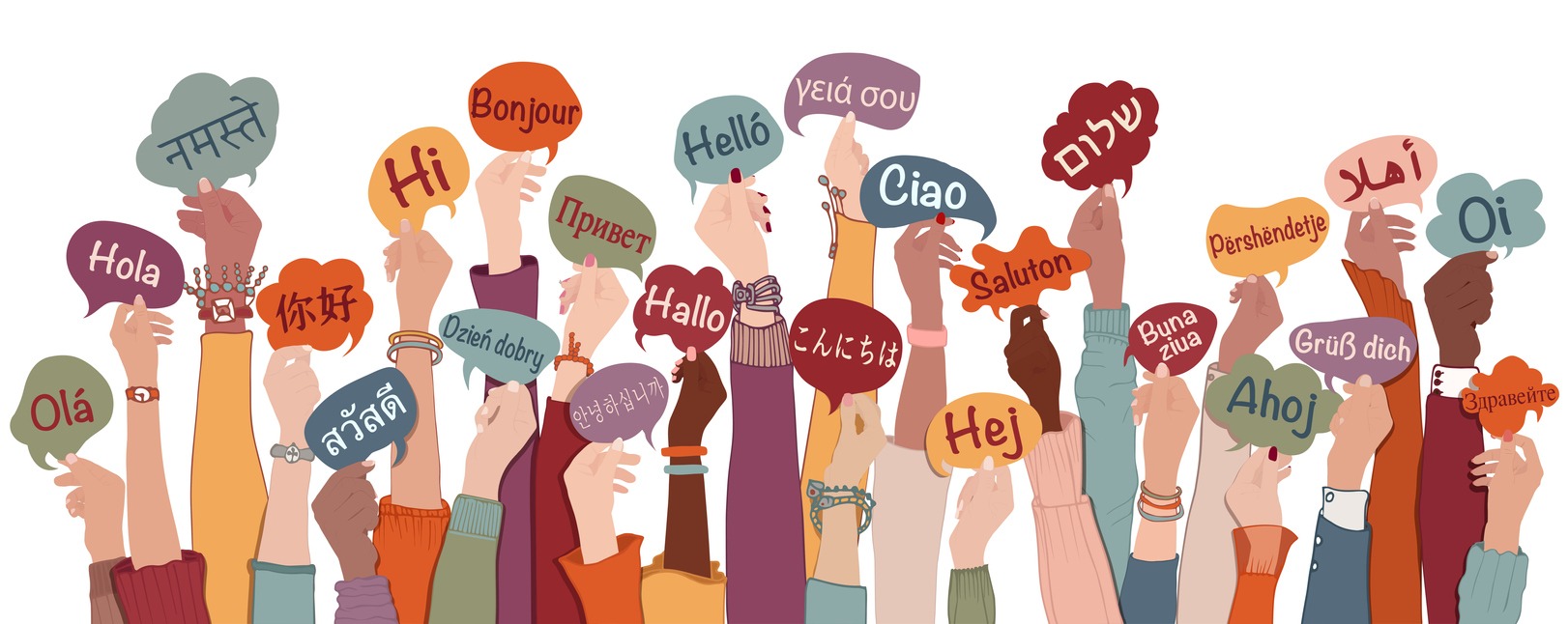Every two weeks, a language dies with its last speaker, taking with it a unique cultural identity and a wealth of knowledge. You might not realize the magnitude of what’s lost when these voices fall silent. Indigenous languages, especially, are repositories of ecological wisdom and spiritual insight, reflecting a deep understanding of the world that’s often incomprehensible in dominant languages.
As you consider the broader impacts of this loss, think about what it means for our collective heritage and future. How does the extinction of a language diminish our global tapestry of history and culture? This question invites you to explore further, understanding that the answer affects us all.
Understanding Language Extinction
Every two weeks, a language dies out, marking a significant loss in our world’s cultural mosaic. This phenomenon, known as language extinction, happens when there are no speakers left to carry on a language’s legacy. It’s a stark reminder of the effects of language loss on our collective heritage. Indigenous languages are especially prone to this fate. They’ve historically faced marginalization and suppression, making them highly vulnerable to extinction.
The causes behind this trend are complex, involving factors like globalization, urbanization, and cultural assimilation. These forces push communities towards dominant languages, sidelining their native tongues. As a result, the world loses more than just words. Language extinction strips us of unique cultural expressions, knowledge systems, and oral traditions that have been passed down through generations. It’s a loss that affects not only the cultural and language diversity of our planet but also diminishes our understanding of human creativity and adaptability.
Cultural Heritage at Risk
The erosion of indigenous languages puts invaluable cultural heritage in peril, stripping communities of their unique stories, traditions, and knowledge. When you hear the term ‘endangered languages,’ it’s not just about words fading into silence; it’s the disappearance of cultural expressions, rituals, and art forms that are specific to each language community. These are elements that you can’t simply translate or replicate in another language; they’re rooted in the very sounds and structures of indigenous tongues.
Cultural practices, ceremonies, and spiritual beliefs are intricately tied to these languages. As they edge closer to extinction, you’re not just losing words but entire worldviews and ways of relating to the world and each other. This isn’t just a loss for the communities directly affected; it’s a blow to global cultural diversity. The rich tapestry of humanity’s heritage grows threadbare with each language that falls silent.
Endangered languages are carriers of history, folklore, and oral traditions that have shaped cultural identities for generations. Without them, you risk not just forgetting tales of the past but also losing the very essence that makes each culture distinct and vibrant in the mosaic of human existence.
Traditional Knowledge Disappearance
Indigenous languages often harbor centuries-old wisdom on medicine, ecology, and spirituality, now teetering on the brink of oblivion as they face extinction. You’re witnessing the erosion of an irreplaceable cultural heritage, where traditional knowledge passed down through generations risks vanishing into thin air. Indigenous peoples, the custodians of this knowledge, find themselves at a crossroads. With every language that falls silent, a library of local knowledge on climate, biodiversity, and local ecosystems disappears.
This loss isn’t just about words. It’s about losing frameworks for understanding the world. Culture and language are intertwined, acting as vessels for traditional knowledge. They offer unique perspectives on nature, history, and how to sustainably manage resources. As languages die out, so does the wisdom on ecological practices crucial for our collective future.
You’re facing a crucial turning point. The rapid loss of indigenous languages leads to a gap in intergenerational wisdom transmission. Imagine the potential breakthroughs in medicine or sustainable living that could slip away unnoticed. The loss of traditional knowledge isn’t just a loss for indigenous peoples; it diminishes humanity’s cultural diversity and resilience.
Impact on Community Identity
As languages disappear, so too does the core of community identity, stripping away the traditions and connections that have bound generations. You’re not just losing words; you’re losing the very essence of what makes your community unique. The stories, practices, and values that have been shared through language form the backbone of cultural identity. When a language dies, it takes with it:
- Cultural markers: Unique ways of expressing history, beliefs, and identity vanish, leaving communities without a distinctive voice.
- Traditions: Ceremonies, songs, and rituals, often described and passed down in the native tongue, fade into obscurity.
- Kinship terms: Special words that define family relationships and social structures disappear, eroding the social fabric.
- Sense of belonging: Without a common language, the feeling of unity and shared heritage among community members weakens.
Preserving endangered languages is about more than saving words; it’s about keeping communities intact and ensuring their traditions, imbued with centuries of wisdom and identity, aren’t lost to history. Without this effort, you’ll see the very soul of vibrant cultures fade, leaving a world less rich and homogeneous.
Loss of Ecological Wisdom
Humanity’s vast ecological knowledge, often encoded in endangered languages, faces extinction, compromising our ability to steward the environment effectively. Indigenous languages hold keys to understanding sustainable resource management and biodiversity conservation. As these tongues fall silent, we’re losing not just words, but the ecological wisdom they contain.
| Aspect of Ecological Wisdom | Impact of Loss | Example |
|---|---|---|
| Sustainable Resource Management | Diminished environmental stewardship | Overfishing due to lost fishing practices |
| Biodiversity Conservation | Weakened efforts to preserve ecosystems | Unrecognized plant species extinction |
| Knowledge of Flora and Fauna | Lost medicinal and nutritional insights | Forgotten medicinal plant uses |
| Climate Adaptation Strategies | Reduced resilience to environmental changes | Ignored traditional weather forecasting |
The disappearance of indigenous languages erodes essential knowledge on medicinal plants, climate adaptation, and ecosystem resilience. This loss affects not just environmental stewardship practices but also our understanding of intricate ecological relationships. Traditional ecological knowledge, deeply intertwined with linguistic diversity, serves as a cornerstone for preserving ecosystems and fostering biodiversity. Without it, our efforts in environmental conservation are significantly handicapped. As you reflect on this, remember that each language extinguished is a library of ecological insight gone forever.
Diminishing Linguistic Diversity
With nearly half of the world’s languages at risk of vanishing, we’re witnessing a rapid decline in linguistic diversity. This isn’t just about words fading into silence; it’s a loss that cuts deep into the fabric of human culture. As language extinction accelerates, we’re moving towards a world that’s less varied and rich, one where cultural homogenization becomes the norm rather than the exception.
The consequences of diminishing linguistic diversity are profound:
- Loss of unique languages: Many languages with no successors are disappearing, taking with them a unique view of the world.
- Cultural homogenization: As linguistic diversity declines, different cultures begin to blend into a monolithic entity, diluting the rich tapestry of human civilization.
- Erosion of unique cultural expressions: Each language carries with it unique expressions, idioms, and ways of seeing the world, which are lost forever with language extinction.
- Impediment to human expression: The variety of languages enriches human communication, offering multiple perspectives and ways of expressing thoughts and emotions.
You’re living in a time when the world’s linguistic landscape is changing rapidly, and not for the better. The loss of linguistic diversity threatens to make our world a less colorful, less diverse place, robbing future generations of the rich cultural heritage that languages carry.
Challenges in Language Revival
Reviving endangered languages faces numerous obstacles, from historical injustices to modern-day challenges. Indigenous languages, in particular, bear the scars of forced assimilation policies and residential schools that aimed to erase them. These historical traumas have severely hampered efforts at language revival, creating a gap in intergenerational transmission as older speakers pass away without passing their linguistic heritage to younger generations.
Moreover, the path to revitalizing endangered languages isn’t just about overcoming the past. Economic pressures, urbanization, and the pervasive influence of dominant languages add layers of difficulty. You’re up against a tide that favors global languages over indigenous ones, making it tough for smaller communities to sustain and promote their linguistic identity.
Yet, all’s not lost. Revitalization efforts hinge on comprehensive strategies that intertwine education, community engagement, and cultural preservation. It requires a collective effort—you need linguists, educators, policymakers, and, crucially, community members to collaborate closely. Successful language revival programs don’t just bring words back to life; they rekindle cultural connections, ensuring that indigenous languages thrive once more through sustained, intergenerational transmission.
Global Implications of Extinction
As languages vanish at an alarming rate, the ripple effects on global culture, ecology, and knowledge are profound and far-reaching. You’re living in a world where the diversity of human expression and thought is shrinking rapidly. The consequences of language extinction aren’t just about losing words; they’re about losing entire worlds of knowledge, culture, and a deep understanding of our environment.
Consider the following impacts:
- Cultural homogenization: With each language that disappears, unique traditions, stories, and customs that have been passed down for generations are at risk of being lost forever.
- Loss of ecological knowledge: Indigenous languages often contain irreplaceable knowledge about local ecosystems, medicinal plants, and sustainable living practices.
- Diminished linguistic diversity: The loss of languages diminishes the rich tapestry of linguistic diversity, making the world a less vibrant and less intellectually stimulating place.
- Barriers to heritage and identity: For communities experiencing language loss, there’s a profound impact on their sense of identity and connection to their ancestors.
Efforts to preserve endangered languages are more than an act of cultural conservation; they’re a vital part of addressing global challenges and ensuring the survival of humanity’s vast and varied heritage.
Conclusion
In conclusion, you’re witnessing the erosion of an irreplaceable cultural mosaic as languages fade away. This loss isn’t just about words; it’s about the disappearance of centuries-old wisdom, ecological understanding, and unique perspectives that shape community identities.
The fight to revive endangered languages isn’t merely linguistic—it’s a battle for cultural survival and diversity. Understanding the stakes, it’s crucial you contribute to preserving these linguistic treasures, ensuring they continue to enrich global heritage.


